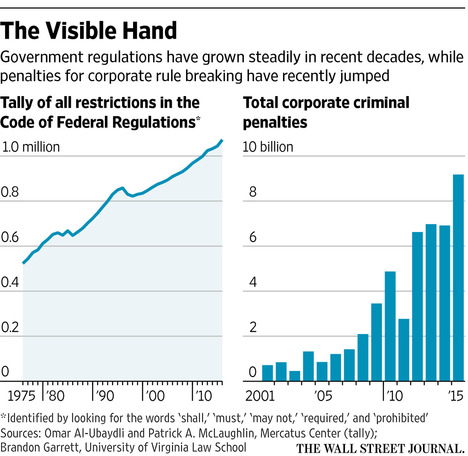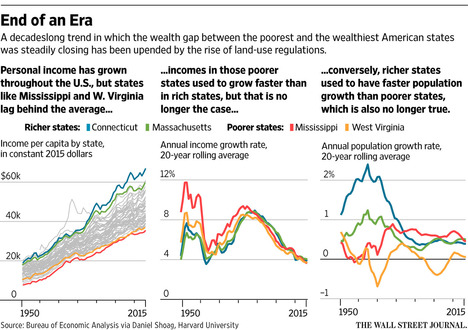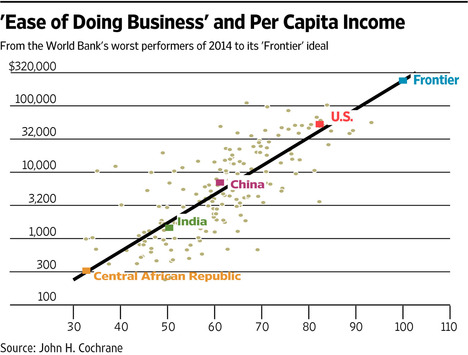 Source of graph: online version of the WSJ article quoted and cited below.
Source of graph: online version of the WSJ article quoted and cited below.
(p. A2) Measuring the regulatory state is no easy task. The Code of Federal Regulations contains more than a million restrictions, as signified by the use of the words “shall,” “must,” “may not,” “required,” and “prohibited,” according to two scholars from the Mercatus Center, a free-market think tank. The total has doubled since 1975, pausing only during Ronald Reagan’s first term and Bill Clinton’s second.
Rule enforcement is also getting more serious. Responding to accusations of lax oversight in the past, federal authorities have imposed criminal penalties, in particular on financial companies, averaging $7 billion a year in the past four years, up fourfold from the prior 11, according to Brandon Garrett, a law professor at the University of Virginia.
. . .
Brent Skorup, a scholar at the Mercatus Center, says regulators like the FCC increasingly extract behavioral conditions from companies via transaction approvals rather than rule-making. For example, Comcast Corp. acquired NBC Universal in 2011 after agreeing to a long list of conditions, from not charging for faster network access (aka abiding by “net neutrality”) to expanding local, public-interest and children’s programming.
For the full commentary, see:
GREG IP. “CAPITAL ACCOUNT; AT&T Feels Growing Reach of Presidency.” The Wall Street Journal (Thurs., Oct. 27, 2016): A2.
(Note: ellipsis added.)
(Note: the online version of the commentary has the date Oct. 26, 2016 title “CAPITAL ACCOUNT; Reaction to AT&T-Time Warner Deal Shows Presidency’s Growing Reach.”)
The data presented in the left panel of the graph above is described in the following article:
Al-Ubaydli, Omar, and Patrick A. McLaughlin. “Regdata: A Numerical Database on Industry-Specific Regulations for All United States Industries and Federal Regulations, 1997-2012.” Regulation and Governance (2015), doi: 10.1111/rego.12107.
The data can be downloaded at:
http://regdata.org/data/
The Garrett results mentioned above, are reported in his article:
Garrett, Brandon L. “The Rise of Bank Prosecutions.” The Yale Law Journal Forum (May 23, 2016): 33-56.



